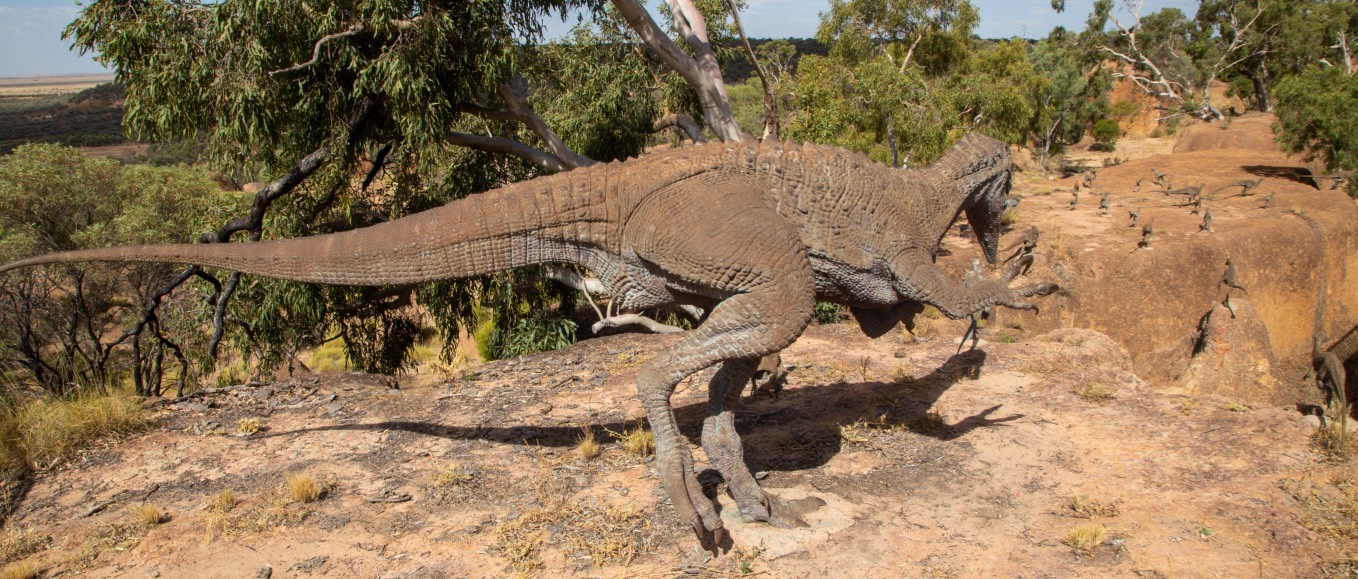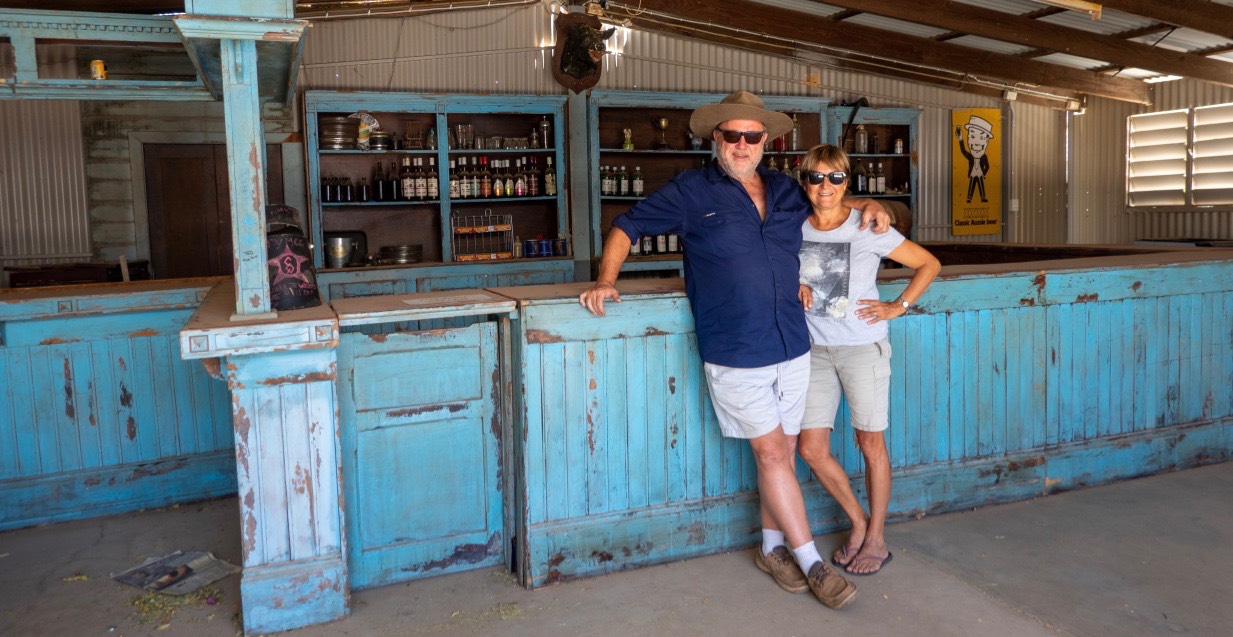 It’s quite unbelievable that we are now in outback Queensland and on the homewards stretch, so to speak! While we were in Western Australia Sydney seemed such a long way away! Austin isn’t affected so much by the heat up here, but I for one can’t wait to get back into Sydney’s moderate climate and get lots of family cuddles!
It’s quite unbelievable that we are now in outback Queensland and on the homewards stretch, so to speak! While we were in Western Australia Sydney seemed such a long way away! Austin isn’t affected so much by the heat up here, but I for one can’t wait to get back into Sydney’s moderate climate and get lots of family cuddles!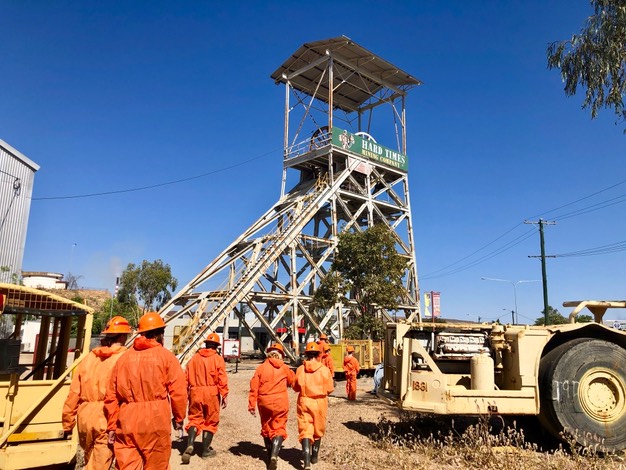
“The Beast”, our car, seems to agree with me. Like two years ago when we travelled through the Center, it started to play up again. Basically, as soon as the thermometer rose above 38 degrees it went into "limp mode” slowing down to about 45km/h, a very dangerous speed if you have massive road trains thundering up behind you! Eventually, after taking a break we got back to normal towing speed of 95km/h and made it to the Ford Dealer at Mount Isa.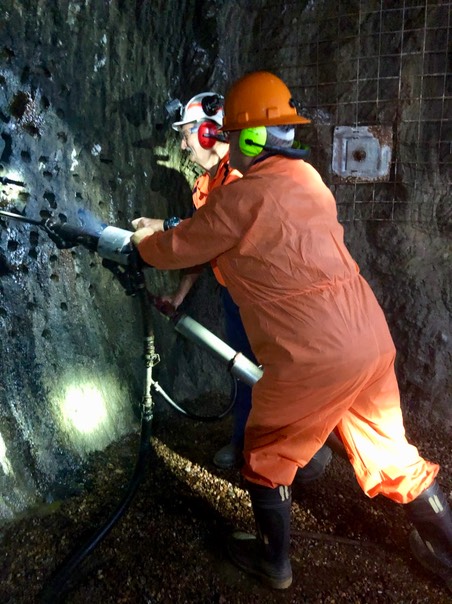
While our car was being tested we attended to a few chores and decided to do the mine tour we missed out on last time we were here. Dressed for the part in generic asexual overalls, gum boots and helmets, we went underground. We learned all about the practise of copper and lead mining in former times and today. While still in the 50s and 60s miners just stood under a ledge using a handheld drill up above their heads and hoping for the Best! A relatively small piece of lead can way a tonne and no helmet would protect against that! Now there are thankfully huge hydraulic drills doing the job. Also, where in the past the only escape was via shafts and lifts, the mines now have large ramps and use with electronic trucks as loaders instead of rickety rail cars. 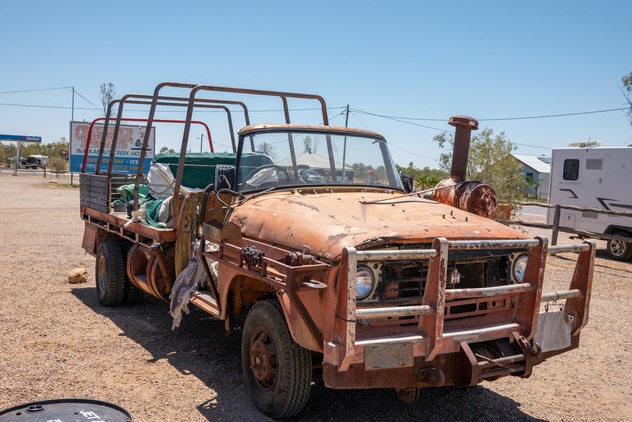 When those trucks come to the end of their life, they are just left deep in the mine and filled up with gravel and rock. What a find this will be for future archaeologists! Talking about “finds”: as soon as our car is ready we are off to Winton, one of the major towns in the dinosaur trails triangle.
When those trucks come to the end of their life, they are just left deep in the mine and filled up with gravel and rock. What a find this will be for future archaeologists! Talking about “finds”: as soon as our car is ready we are off to Winton, one of the major towns in the dinosaur trails triangle.
The Beasts diesel filter was exchanged and everything seemed ok until- half way down the road to Winton- it wasn’t again! 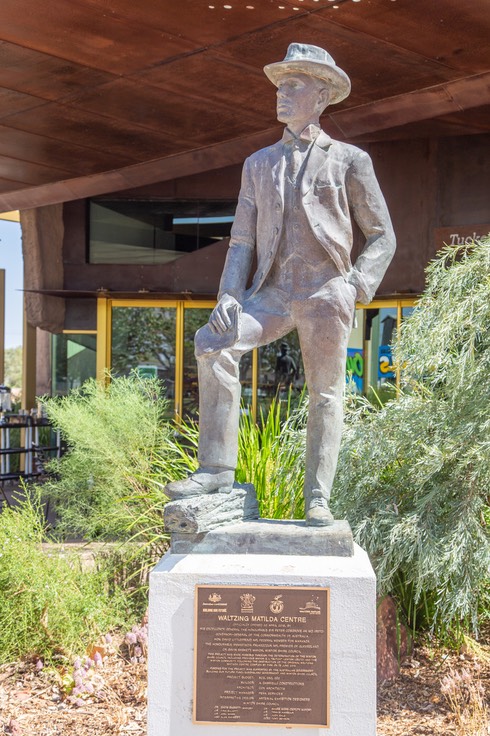 So letting car and our temper cool down again, we stopped and had a shandy at Walkabout Creek Hotel, where the original bar used in "Crocodile Dundee” has survived and the beer is still cold! At least our car looks better than the one Mick Dundee drove around in! We stayed at nearby Kynuna a town of 20 inhabitants, well 22 with us, for the night. Leaving at 7am when it was still a cool 27 degrees we made it to Winton before 10 am when temperatures hit 37 degrees. So far, so good! But the next chance to get the car checked is still 600kms away.
So letting car and our temper cool down again, we stopped and had a shandy at Walkabout Creek Hotel, where the original bar used in "Crocodile Dundee” has survived and the beer is still cold! At least our car looks better than the one Mick Dundee drove around in! We stayed at nearby Kynuna a town of 20 inhabitants, well 22 with us, for the night. Leaving at 7am when it was still a cool 27 degrees we made it to Winton before 10 am when temperatures hit 37 degrees. So far, so good! But the next chance to get the car checked is still 600kms away.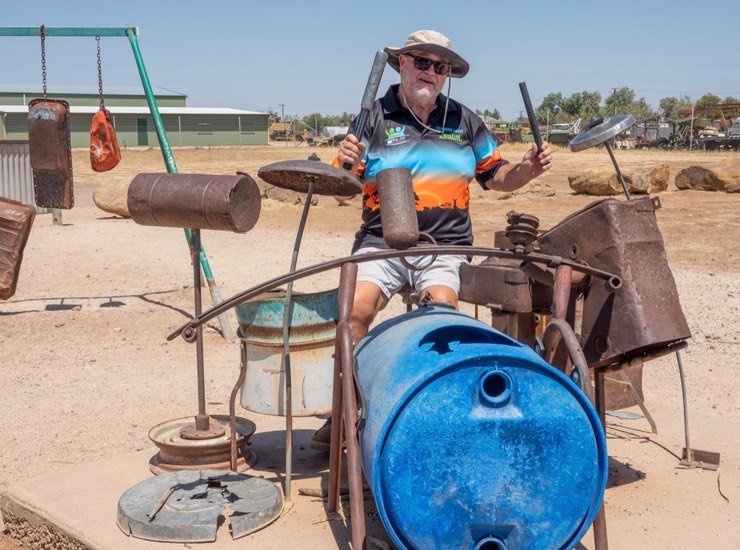 While the temperatures were now said to rise to 41 and 42 degrees Celsius, Winton seemed a lovely place to stay. The statue of Australias famous poet, Banjo Paterson, and characters of his poems greet visitors on the main street. P B Paterson wrote the song “Waltzing Matilda” at nearby Dagworth Station unaware of to what fame the story of the unlucky swagman would rise. The “Waltzing Matilda Centre” is a museum dedicated to the story of the song which became so emotional and iconic to Australians. When Patersons was sent as a war correspondent in South Afrika during the Boer war, he was amazed to hear the soldiers singing Waltzing Matilda as they marched. It continued to be sung in the two world wars after that. Austin and I tried to play the song on the so-called Musical Fence at the outskirt of town, Aussie on drums and I, trying to make the fence wires hum in tune. Luckily no-one was around! The small country town, once the centre of sheep farming and opal fossicking and now surrounded by cattle farms surely produced some characters. There is the dilapidated shed of Willie Mar's Chinese Market Garden. Willie Mar married, but his wife remained in China and on an extended visit to his homeland his son was born.
While the temperatures were now said to rise to 41 and 42 degrees Celsius, Winton seemed a lovely place to stay. The statue of Australias famous poet, Banjo Paterson, and characters of his poems greet visitors on the main street. P B Paterson wrote the song “Waltzing Matilda” at nearby Dagworth Station unaware of to what fame the story of the unlucky swagman would rise. The “Waltzing Matilda Centre” is a museum dedicated to the story of the song which became so emotional and iconic to Australians. When Patersons was sent as a war correspondent in South Afrika during the Boer war, he was amazed to hear the soldiers singing Waltzing Matilda as they marched. It continued to be sung in the two world wars after that. Austin and I tried to play the song on the so-called Musical Fence at the outskirt of town, Aussie on drums and I, trying to make the fence wires hum in tune. Luckily no-one was around! The small country town, once the centre of sheep farming and opal fossicking and now surrounded by cattle farms surely produced some characters. There is the dilapidated shed of Willie Mar's Chinese Market Garden. Willie Mar married, but his wife remained in China and on an extended visit to his homeland his son was born.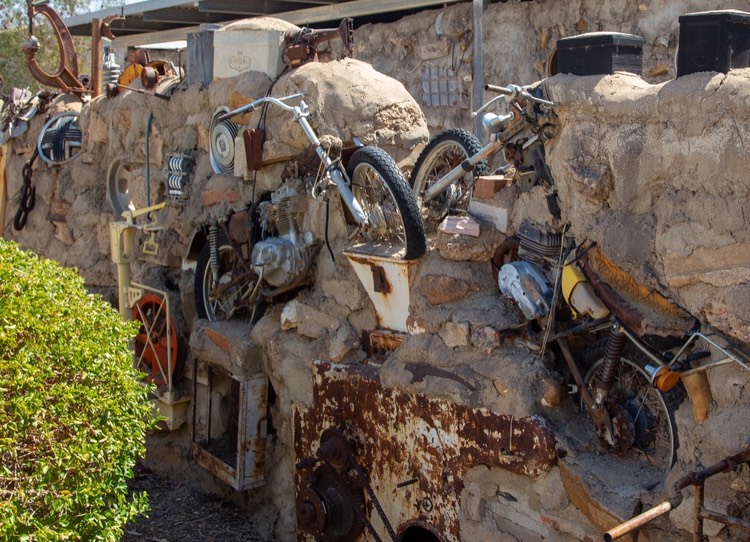 He only saw his son again 20 years later on his next visit and brought him to Australia. Father and son worked side by side ground and selling vegetables and repairing machinery, until finally the son took over his fathers business and ran it till he himself died. Another character of town was the German man and opal miner Arno Grotjahn.
He only saw his son again 20 years later on his next visit and brought him to Australia. Father and son worked side by side ground and selling vegetables and repairing machinery, until finally the son took over his fathers business and ran it till he himself died. Another character of town was the German man and opal miner Arno Grotjahn.
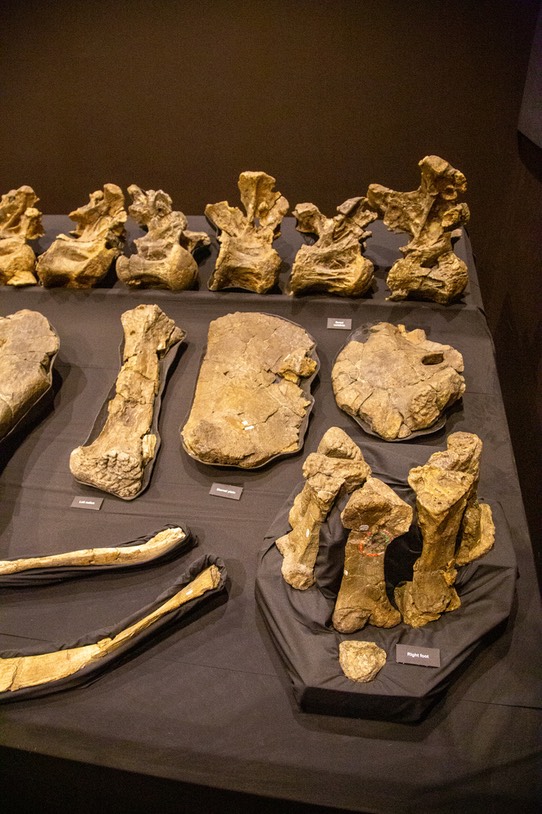 When he retired he constructed a 70 m long wall made of rocks from his opal mine, concrete and everything plus the kitchen sink! Apparently an expression of his ‘inner thoughts’ this wall has now become a tourist attraction.
When he retired he constructed a 70 m long wall made of rocks from his opal mine, concrete and everything plus the kitchen sink! Apparently an expression of his ‘inner thoughts’ this wall has now become a tourist attraction.
The main reason we visited Winton was, of course, to keep up with our grandson, Jaxon, and learn more about dinosaurs. So we delved into the age of the dinosaurs 80 to 100 million years ago. In Australia evidence of dinosaurs have only been found quite recently. In 1960 here at Winton grazier Glen Seymour discovered a strange foot print which looked to him like a chicken foot! It took until 1977 to learn the full extend of the finding. 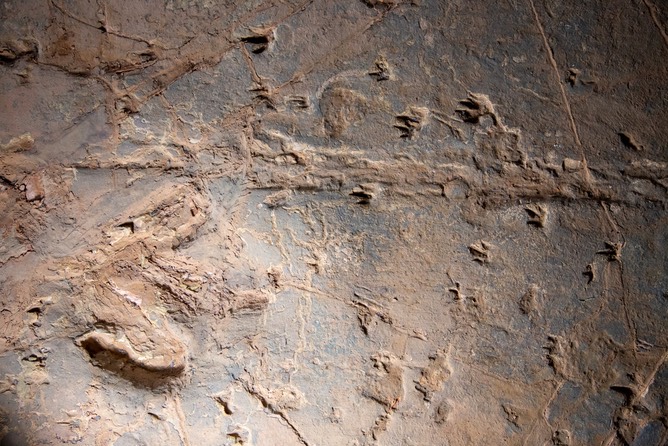 After excavations in 1971 and 1976/77 a" Dinosaur Stampede" was discovered, something which has never been seen before! Today the 30 meter excavation site shows 3300 footprints belonging to hundreds of individual dinosaurs! They consist of small chicken sized Coelurosaurs and herbivorous Ornithopods approximately sized like emus. They were found within an impermeable ossified mud layer next to where once a river had been and where these dinosaurs were obviously grazing. But the deep tracks of a much larger, carnivorous Dinosaur can be seen moving with increasing speed towards this large group, probably looking for lunch! This caused a panicked stampede of the smaller creatures away from the predator.
After excavations in 1971 and 1976/77 a" Dinosaur Stampede" was discovered, something which has never been seen before! Today the 30 meter excavation site shows 3300 footprints belonging to hundreds of individual dinosaurs! They consist of small chicken sized Coelurosaurs and herbivorous Ornithopods approximately sized like emus. They were found within an impermeable ossified mud layer next to where once a river had been and where these dinosaurs were obviously grazing. But the deep tracks of a much larger, carnivorous Dinosaur can be seen moving with increasing speed towards this large group, probably looking for lunch! This caused a panicked stampede of the smaller creatures away from the predator.
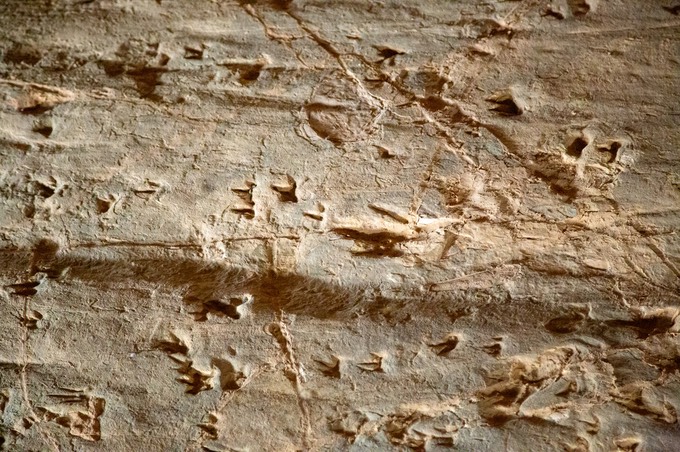 The predator has the long name of "Australovenator wintonensis”! Nearby the bones of the only known A. wintonensis have been found and are kept in the 'Australian Age of Dinosaurs” museum south west of Winton. This specimen has been called “Banjo” by the local scientists. In the same museum are also the huge bones of “Matilda”, a herbivorous Diamantinasaurus whose bones were found buried together with Banjo’s.
The predator has the long name of "Australovenator wintonensis”! Nearby the bones of the only known A. wintonensis have been found and are kept in the 'Australian Age of Dinosaurs” museum south west of Winton. This specimen has been called “Banjo” by the local scientists. In the same museum are also the huge bones of “Matilda”, a herbivorous Diamantinasaurus whose bones were found buried together with Banjo’s. 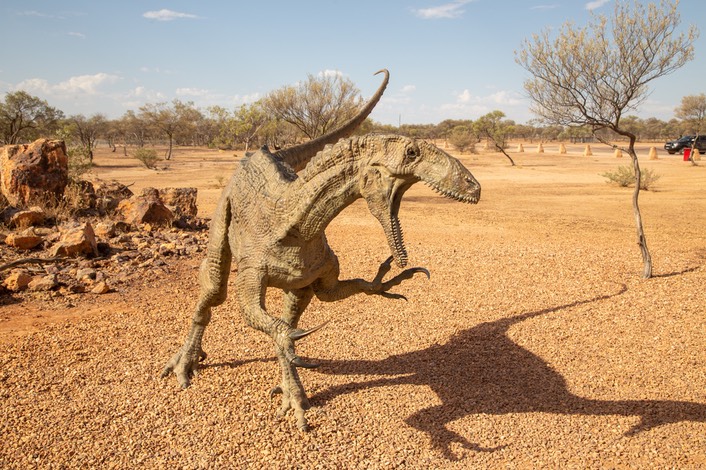 I was astonished to learn that there were many kinds of small dinosaurs and flying reptiles, but due to their vulnerability their bones are rarely discovered. The same applies to the skull bones of even larger dinosaurs. The skull bones are not fused and so can be spread far and wide.
I was astonished to learn that there were many kinds of small dinosaurs and flying reptiles, but due to their vulnerability their bones are rarely discovered. The same applies to the skull bones of even larger dinosaurs. The skull bones are not fused and so can be spread far and wide.
In so-called "Dinosaur Canyon" life sized replicas of Australian dinosaurs are watching your every step. There is even the odd real life kangaroo keeping a look-out!
